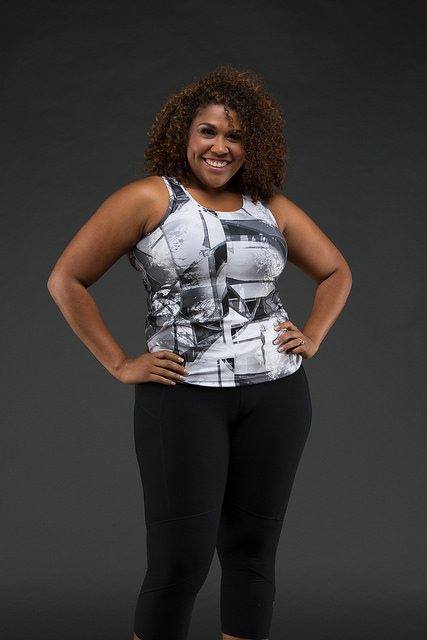Habits: Reprogramming Yourself for a Habitually Healthy You
/By Angela Hauck
Model: Natalie Davis
We can be habitually happy; habitually driven; and habitually supportive.
Just as easily we can be habitually judgmental; habitually late; and habitually lazy.
The body enjoys familiarity and routine. Take for example the route that you always take to get to work. Unless there is construction, we often stick to the same path every day.
The brain is no different. It likes to take the same route and altering the route or re-paving the road is not an easy task.
Moreover, although we are all well aware that our current health and body composition is a direct reflection of our everyday habits, changing those habits is not easy.
In hindsight, I can identify all of the habits that contributed to the person I used to be.
In college, I would get a massive slice of cheese pizza every day for lunch and lather it in a disgustingly thick layer of parmesan cheese.
A bottle of pop would wash it down and I would often add a chocolate bar for dessert.
Every evening was filled with a few hours of television and online battles of tetris.
A few nights a week, I would engage in excessive binge drinking. Not long after was brutal hangovers and puking in the hallway garbage cans at school.
While living in British Columbia, I would consume Chicken Nuggets, french fries and a Coke from McDonalds and then go to Dairy Queen for a blizzard treat.
Every evening was filled with a long nap and a few unproductive hours on my computer.
Every weekend, booze took priority and Sundays were always a complete write-off.
I only bought fast-food or food that was on sale. I scarfed down meals manically and mindlessly.
Water and vegetables were pretty much non-existent and it’s no surprise that as a result, I became unhealthy, overweight, unmotivated and lazy.
That very well could have been what I became forever. I could have stayed habitually overweight. Habitually lazy. Habitually fat.
In turn, I could have taught my kids unhealthy choices, habits and behaviours. And, they too could have come habitually overweight. Habitually lazy. Habitually fat.
Or not. . .
Although automatic in nature, habits are a choice, they can be temporary and they have the ability to change.
Take for example what is the first thing you do when you wake up in the morning?
What’s typically on the table for breakfast?
How do you decide what’s for dinner?
How do you deal with stressors in your life?
What habits are holding you back physically and mentally?
And then consider the effect your habits are having on those that are around you.
One of the coolest capabilities we have as human beings is the ability to influence other people, especially the people that we love.
By demonstrating healthy habits, we can enrich and inspire our family members to better health. We have the power to shape a solid foundation and a solid future for our children.
By getting them involved in healthy living at a young age, we can help prepare them for a future of maintaining a healthy weight and a future of avoiding health problems related to excess body fat.
I’ve put together my top 8 healthy nutrition habits that you can apply in your household.
1) Be a good role model, especially when you’re tired, stressed or busy.
It’s very easy to grab “junk” food when life gets challenging.
It’s important to remember who is watching. Is this a habit that you would want your children to emulate?
2) Read labels – not to learn how many calories are in the item, but to find out the ingredients.
Teach your children (when they are old enough) how to identify hidden sugars. Teach them to make selections that are high in protein and high in fiber.
3) Sit down with your kids to plan out the meals for the week.
Listen to their ideas and work as a team. Perhaps your son wants to have spaghetti and garlic bread for dinner with a chocolate brownie for dessert.
Come up with ways to include a vegetable and a good protein source into the meal then find a healthy brownie recipe that you can make together.
4) Make up a homemade trail mix full of raw nuts and seeds such as walnuts, pumpkin seeds, almonds and chia seeds and keep it on hand for a quick snack.
Packed with omega-3 fats, having these on hand can help with cognitive development and the prevention of many chronic diseases.
5) Mix flavoured yogurt with plain yogurt to cut back on the sugar.
This also works with chocolate milk and juices. You can dilute with milk or water.
6) Let your children choose their favourite fruits and vegetables.
When you are in the produce aisle, show them the many colourful options and explain why fruits and vegetables are important.
When you get home, chop, prepare and organize them so that they are easily accessible.
Involve them in the process – even young children can do things like tear up lettuce for salad and put lids on Tupperware containers.
7) Serve appropriate portions.
Teach your children what it feels like to eat until they are 80% full. Let kids stop when they are no longer hungry instead of when the plate is clean.
8) Take your family’s favourite meals and find a way to do them over!















